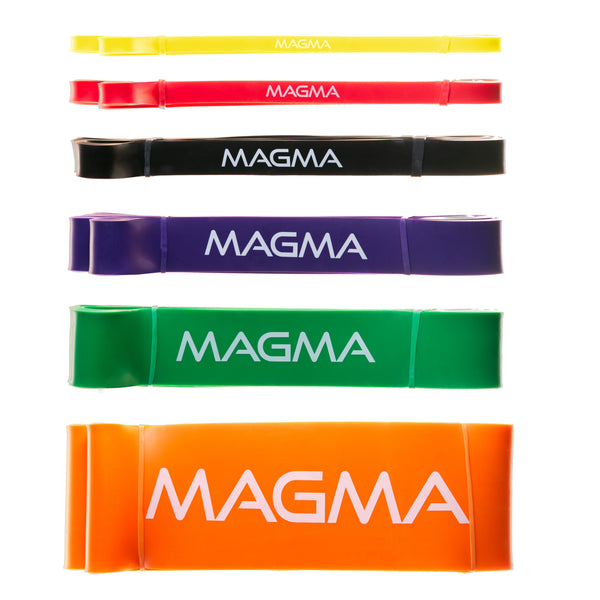Your Cart is Empty
April 15, 2024 2 min read
Resistance band training is an effective, low-impact way to improve your strength, balance, flexibility, and overall fitness. The bands provide consistent resistance throughout the range of motion, which makes them great for targeting specific muscle groups. Unlike weightlifting, you don’t need a gym membership or expensive equipment to get started. All you need is a set of resistance bands and a few basic exercises.
Shop The Collection: Resistance BandsThere are several types of resistance bands available, including traditional flat-band loops, tube bands, and power bands. Flat-band loops are typically made of strong rubber or cloth and come in varying thicknesses. Tube bands are similar to flat-bands, but they have handles on the ends to make it easier to grip. Power bands are elastic tubes with handles on either end, and they come in varying lengths and levels of resistance. Some brands also offer adjustable tension bands, which allow you to adjust the level of resistance.
 Shop The Gear: MAGMA Resistance Bands, from $6.99 USD
Shop The Gear: MAGMA Resistance Bands, from $6.99 USD
Resistance band training has several benefits over traditional weight training. For one, the bands provide constant tension throughout the entire range of motion, which helps to target specific muscle groups more effectively. Plus, you can use the bands to perform both concentric (shortening) and eccentric (lengthening) muscle contractions, which is not possible with weights. This helps to improve muscle strength, coordination, and range of motion.
 Shop The Gear: MAGMA 5-Pack Resistance Bands Bundle With Bag, $77.99 USD
Shop The Gear: MAGMA 5-Pack Resistance Bands Bundle With Bag, $77.99 USD
Resistance band training is also safer than traditional weight training. Since the bands provide a more consistent force throughout the range of motion, there is less risk of injury. Plus, the bands are lightweight and portable, so you can take them anywhere and train anytime.
When choosing resistance bands, it’s important to select ones that are suited for your fitness level and goals. Beginners should start with light to moderate resistance bands, as these will be easier to work with. If you’re advanced, you may want to opt for heavier bands. It’s also important to consider the length of the band. Shorter bands are great for upper body exercises, while longer bands are better for lower body exercises.
Once you have the right bands, you’re ready to get started. Before beginning any exercise, it’s important to warm up with a few dynamic stretches to help prevent injury. After you’ve warmed up, you can begin the exercises. Start by mastering the basic movements such as rows, chest presses, squats, and bicep curls. Once you’ve mastered the basics, you can move on to more challenging exercises such as overhead presses, tricep extensions, and lateral raises.
When performing exercises with resistance bands, it’s important to maintain good form. Keep your core braced and avoid jerking or bouncing the bands. Focus on maintaining control throughout the range of motion. Also, be sure to rest between sets to give your muscles time to recover.
Resistance band training is an effective way to build strength, improve balance, and increase flexibility. The bands provide consistent resistance throughout the range of motion, making them ideal for targeting specific muscle groups. Plus, they are lightweight and portable, so you can take them anywhere. Just be sure to choose the right bands and maintain good form when performing exercises.
Shipping Protection gives you peace of mind while saving you time and money.
Shipping Protection provides coverage for eligible orders that are lost or damaged in transit, or stolen after delivery has been confirmed by the carrier. MAGMA Fitness, through its partners, administers the protection program and may receive compensation for these services. Coverage is subject to the terms, conditions, and exclusions outlined in our Shipping Protection Terms & Conditions.